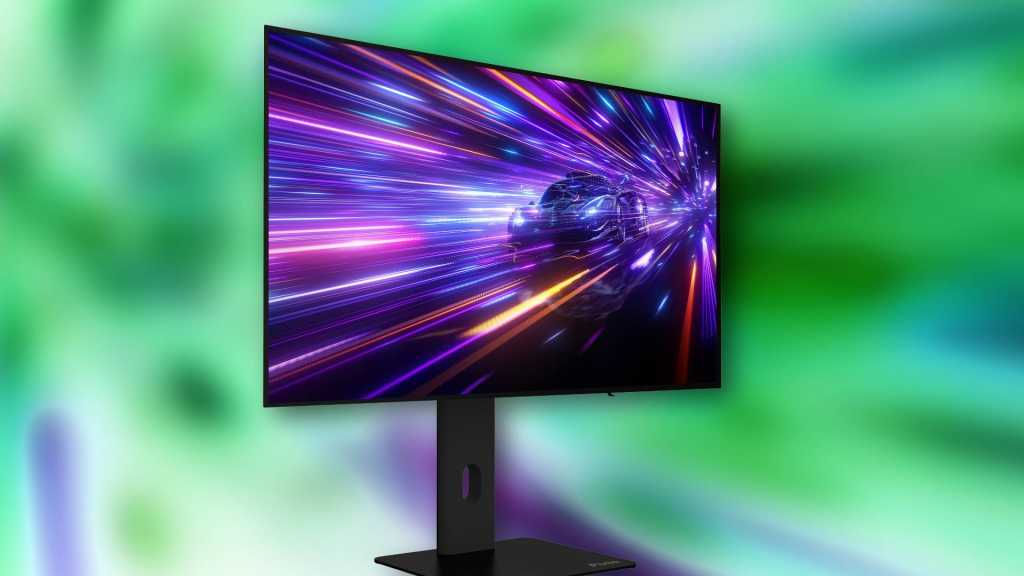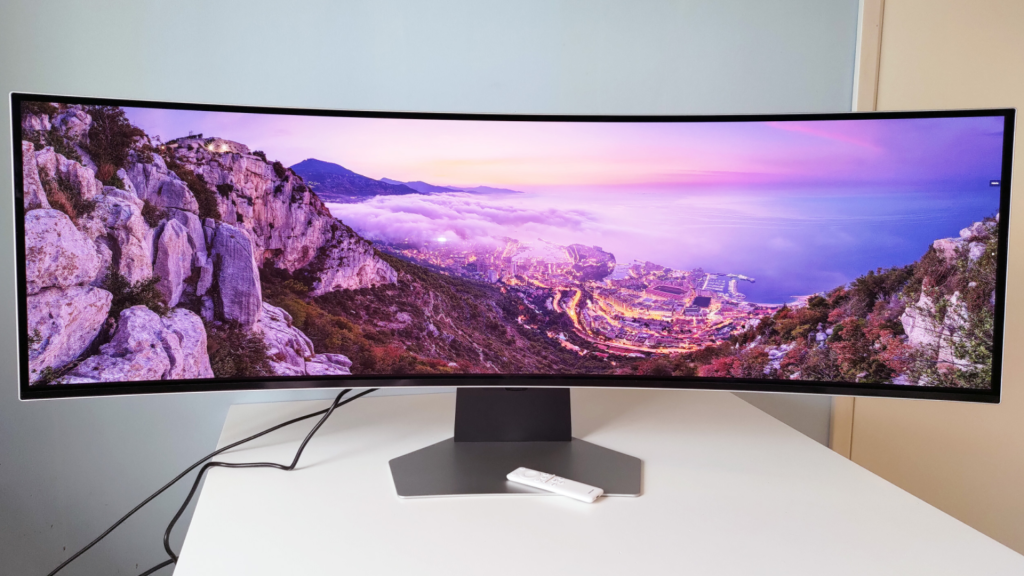## Is This the Best $550 Gaming Monitor EVER? 🤯
Forget blurry combat and laggy reflexes. Today, we’re diving into the world of high-end gaming monitors without breaking the bank. PCWorld just dropped a bombshell: a 1440p, 240Hz OLED monitor for a jaw-dropping $550! 😲 We’re talking buttery-smooth gameplay, vibrant colors, and insane response times.


The OLED Advantage
OLED technology has emerged as a game-changer in the realm of display technology, offering a compelling set of advantages over traditional LCD panels, particularly for discerning gamers. The most notable distinction lies in the fundamental nature of how these displays generate images. Unlike LCDs, which rely on backlighting and color filters, OLEDs consist of organic light-emitting diodes, each capable of emitting its own light.
This inherent characteristic translates into several key benefits. Firstly, OLEDs achieve perfect black levels. Since individual pixels can be completely turned off, there is no ambient light bleed, resulting in an unparalleled depth of contrast and a more immersive visual experience. This is particularly crucial in games with dark environments, where subtle details and shadows can make a significant difference.
Secondly, OLEDs boast exceptional response times. The ability to individually control each pixel allows for lightning-fast transitions, minimizing motion blur and ghosting, even during rapid-fire action sequences. This responsiveness is essential for competitive gaming, where split-second reactions can determine victory or defeat.
Furthermore, OLEDs excel in terms of viewing angles. The emission of light from each pixel ensures consistent image quality regardless of the viewing position, eliminating the distortion and color shift often encountered with LCDs. This wide viewing angle is beneficial for multiplayer gaming sessions or when sharing the screen with others.

Budget Implications
The Pixio’s price point of $549.99 represents a significant departure from the typical cost associated with OLED gaming monitors. While it’s tempting to perceive this as a steal, it’s essential to consider potential hidden costs and the long-term value proposition.
Typically, OLED monitors command a premium price due to the complexity and cost of manufacturing these displays. However, the Pixio’s affordability suggests a focus on value engineering, potentially utilizing cost-saving measures in areas such as the stand design or internal components. While this may not significantly impact core performance, it could result in a less premium build quality or fewer features compared to more expensive alternatives.
Moreover, the availability of this monitor at such a competitive price could be transient. Retailers may be clearing out inventory to make room for newer models or capitalize on limited-time promotions. It’s advisable to research the monitor’s typical retail price and compare it to current offerings to assess whether the discount is genuinely substantial.

Long-Term Value
The longevity of an OLED gaming monitor is a crucial consideration for discerning gamers who seek a long-term investment. OLED technology, while advanced, is known to be susceptible to burn-in, a phenomenon where static elements displayed for extended periods can leave permanent imprints on the screen.
Fortunately, manufacturers have implemented various measures to mitigate burn-in risk, such as pixel shifting algorithms and screen savers. However, it’s essential to adopt responsible usage practices, such as avoiding prolonged display of static elements and utilizing screen savers during periods of inactivity. The Pixio’s two-year warranty provides some peace of mind, but it’s ultimately the user’s responsibility to minimize burn-in risk.
Furthermore, the future-proofing of this monitor depends on its ability to keep pace with technological advancements. At its current refresh rate of 240Hz, the Pixio is well-equipped for modern gaming demands. However, as display technology evolves, future games may support even higher refresh rates or resolutions, potentially rendering this monitor obsolete.
Beyond the Pixio: The Samsung Ultrawide OLED – A Tempting Alternative
While the Pixio offers a compelling entry point into OLED gaming, the Samsung 49-inch ultrawide OLED presents a tantalizing alternative for gamers seeking a more immersive and premium experience. This behemoth of a display boasts a resolution of 5120×1440, effectively combining the visual real estate of two 1440p panels into a single, panoramic expanse.
Size and Resolution
The sheer size of the Samsung ultrawide OLED is undeniably impressive. With a diagonal measurement of 49 inches, it envelops the user in a truly immersive gaming environment. The 5120×1440 resolution provides an expansive canvas for games, offering a level of detail and clarity that surpasses traditional 1440p or even 4K displays.
The Price of Premium
The Samsung OLED’s price tag of $879.99 reflects its premium positioning and advanced features. While significantly more expensive than the Pixio, it’s essential to consider the value proposition. The ultrawide aspect ratio, coupled with the high resolution, offers a level of immersion and visual fidelity that’s difficult to replicate with other display technologies.
The Catch
Despite its allure, the Samsung ultrawide OLED does have some limitations. Its primary drawback is its desktop-centric design. The lack of video input via USB-C restricts its compatibility with certain mobile devices or laptops. Furthermore, the inclusion of Samsung’s smart TV software, while offering streaming capabilities, may be unnecessary for gamers who primarily utilize dedicated gaming platforms.
Conclusion
So, is this 1440p 240Hz OLED gaming monitor worth the hype? PCWorld’s review makes a convincing case for “solid score” territory. The combination of stunning OLED visuals, buttery smooth 240Hz refresh rate, and a surprisingly accessible price point of $550 is undeniably tempting. It delivers on image quality, responsiveness, and overall performance, making it a compelling choice for both hardcore and casual gamers alike. This isn’t just about a single monitor, though. This technology represents a turning point, making high-end gaming features more attainable for a wider range of players. As OLED technology matures and manufacturing costs decrease, we can expect to see even more affordable options with jaw-dropping visuals and lightning-fast response times. The future of gaming is looking brighter, sharper, and smoother, and this monitor is a shining example of that exciting evolution. Are you ready to level up your gameplay?
